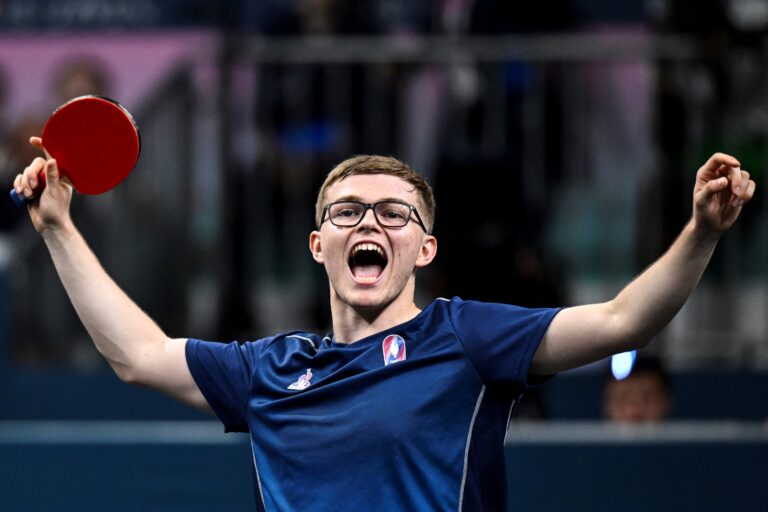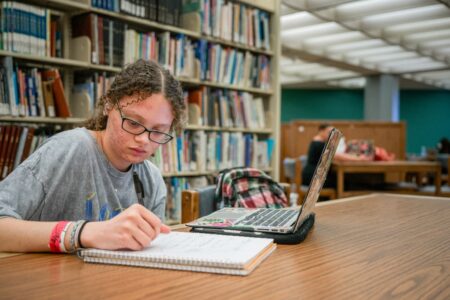
If you’re naturally athletic and have good eyesight, you may also have quicker perception, higher brain activity, and better performance at both new and day-to-day tasks.
Quick responses and athletic ability are tied to an individual’s brain power and visual processing, according to a new study from the University of Florida.
Professor of Biomedical Engineering Daniel Ferris, Ph.D., and his former doctoral student, Noelle Jacobsen, Ph.D, discovered the discrepancies when they studied how quickly people could pick up new motor skills.
The researchers recruited 33 healthy, neurotypical adults (15 females, 18 males) and 12 additional participants to walk on a split-belt treadmill for 40 minutes while wearing brain-monitoring electrodes. They were screened for right-foot dominance, physical activity levels, and absence of major musculoskeletal, neurological, or cardiovascular conditions.
To make things harder, the test subjects wore earplugs to reduce their ability to hear speed changes and were instructed to look straight ahead and use the handrail only if necessary. They were informed when the treadmill would initially start and finally stop, but were not warned about belt speed changes in between. This research method forced participants to rapidly learn a new way of walking in a short amount of time.
The subjects were then split into two groups based on their results. The first group were the fast adapters, who exhibited better balance and gait restoration and took only an average of 60 steps for a steady stride. The second group took more time to adapt, requiring an average of 238 steps to achieve the same result.
When it came to analysing their brain output, both groups showed significant differences – for example, the first group showed enhanced, equal brain activity in the theta, alpha, and beta bands, while the second group’s activity initially centred around the theta band before traversing to the alpha and beta bands.
Fast learners also showed high activity in the brain regions involved in processing and planning muscle movements. Their anterior cingulate cortex – known as the error-correction region of the brain – activated rapidly to respond to the changes.
“We were able to analyse the brain activity of the best learners versus the slow learners, and, lo and behold, some of the important areas showed very clear differences in their brains,” Ferris said. “The biggest surprise to us was that the visual cortex was very involved in the differences between the slow and fast learners. That suggests there’s something about visual information that is key to how you’re learning to move your body.”
Ferris explains that visual processing plays a large part in learning new things, such as picking up dance moves quickly, or training for a new sport. “If you’re having trouble with vision, you may have problems learning new motor skills,” Ferris said.

US’ #01 Kristen Nuss dives to return the ball in the women’s pool B beach volleyball match between USA and Australia during the Paris 2024 Olympic Games at the Eiffel Tower Stadium in Paris on July 29, 2024. (Photo by Luis TATO / AFP)
Is it really a natural advantage?
So are some people actually born smarter than the rest? Perhaps the truth is that they just have better cognitive abilities.
They process things differently, have better motor skills, and can pick up and learn new information quicker than others. Some individuals may even have naturally more efficient neural pathways for specific types of learning. Simply put, they really are “built different”.
But thanks to the human brain’s ability to change and adapt due to experience, it can be trained to be smarter and faster over time. Unlike muscles or flexibility, the brain is a bit more difficult to train, but not impossible. The brain can change, reorganise, and grow new pathways and neural networks solely by learning new information – this is called neuroplasticity.
While brain plasticity occurs throughout life, certain age groups, such as children, are more sensitive and responsive to experiences. The brain changes a great deal during one’s early years, but it can continue to do so even as one becomes an adult through proper learning and stimulation, such as picking up a new language, traveling and exploring new places, creating art, reading, and more.










